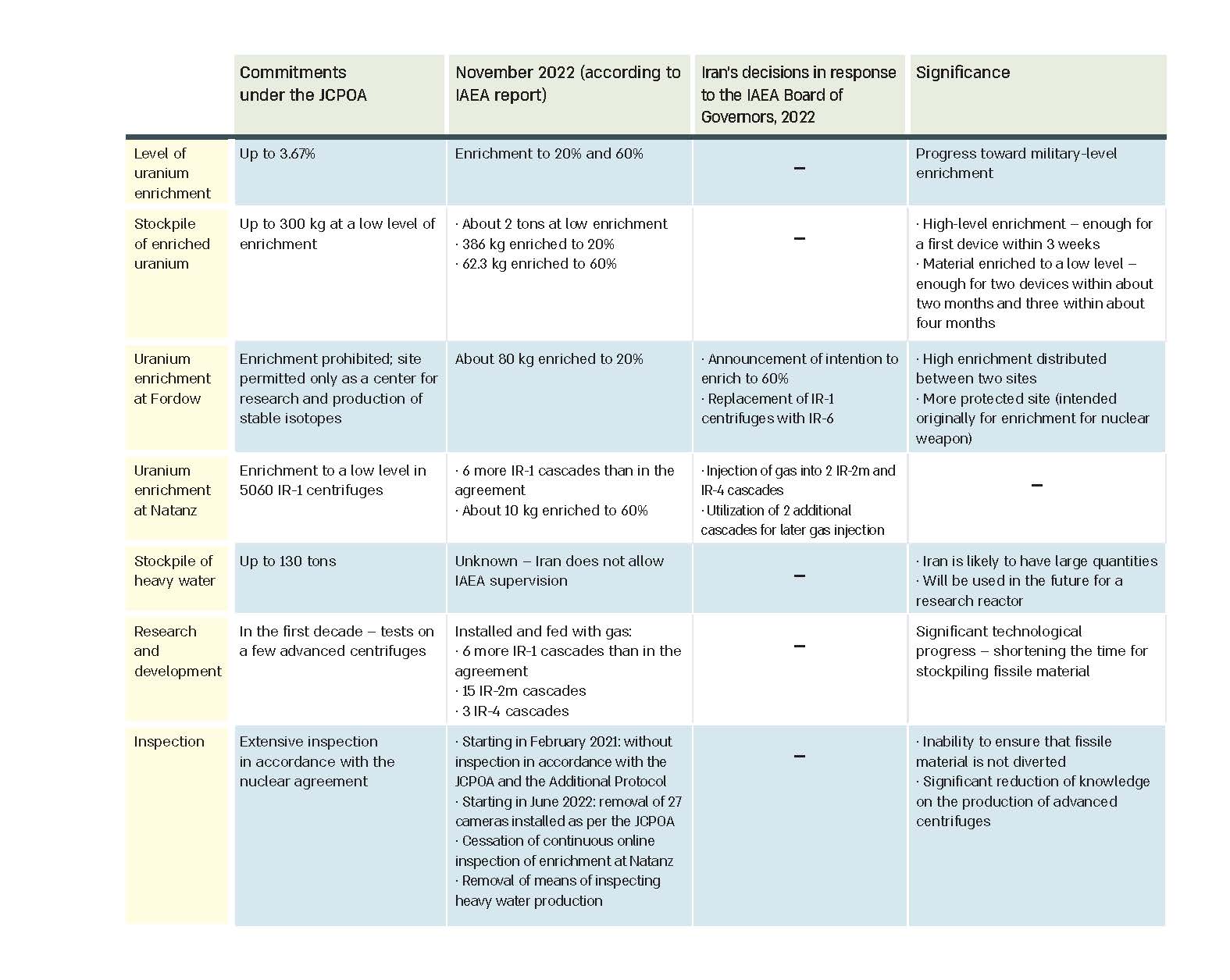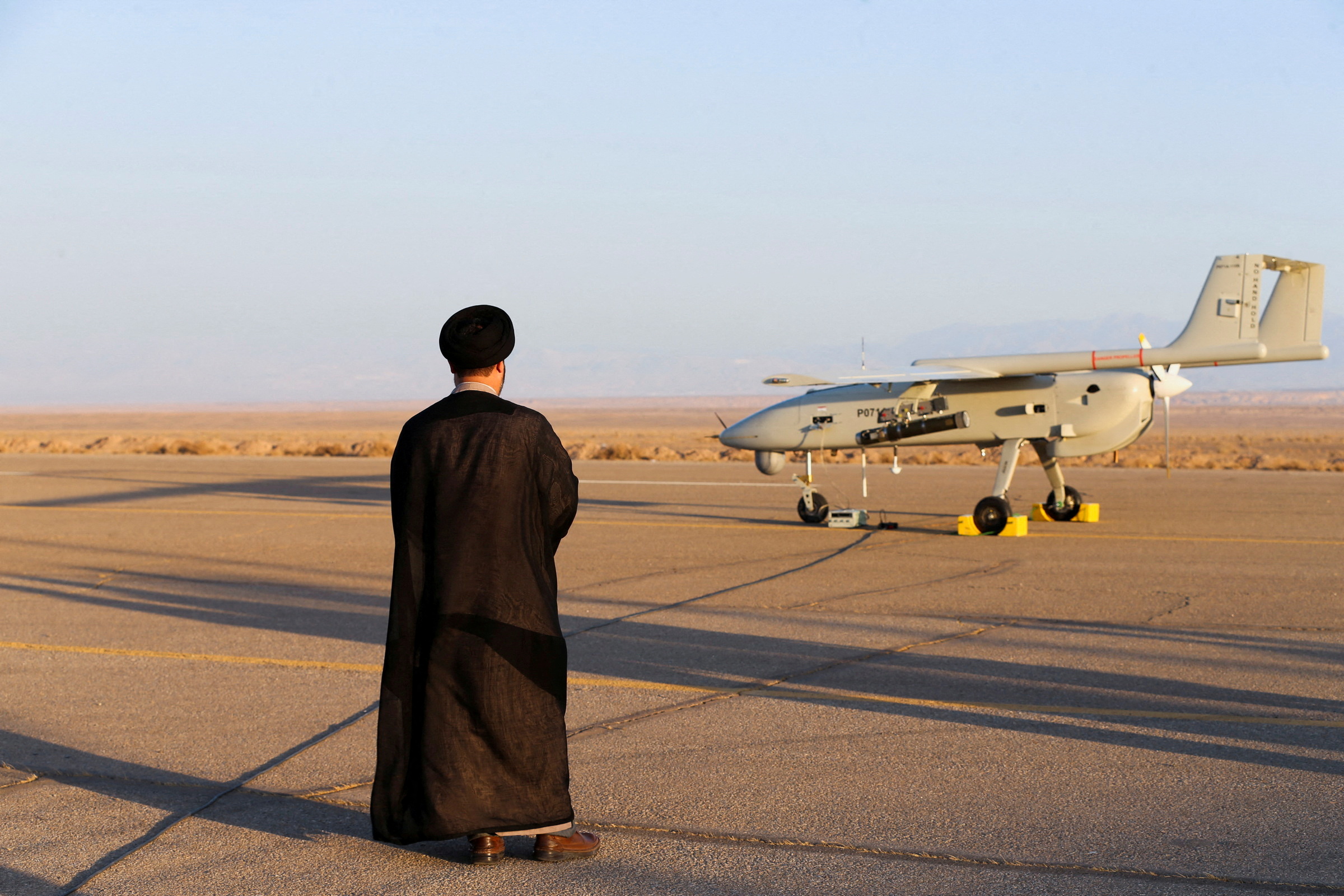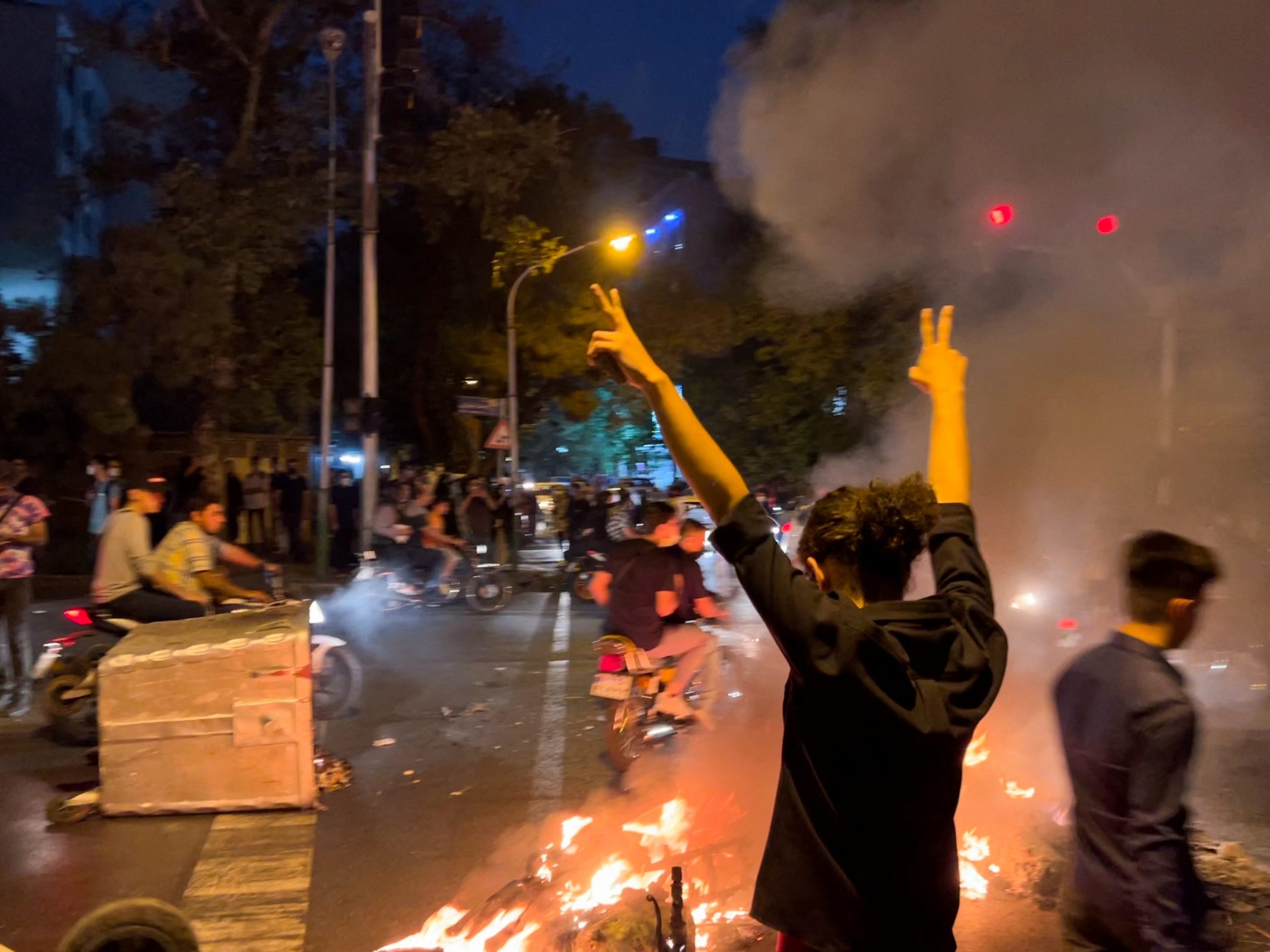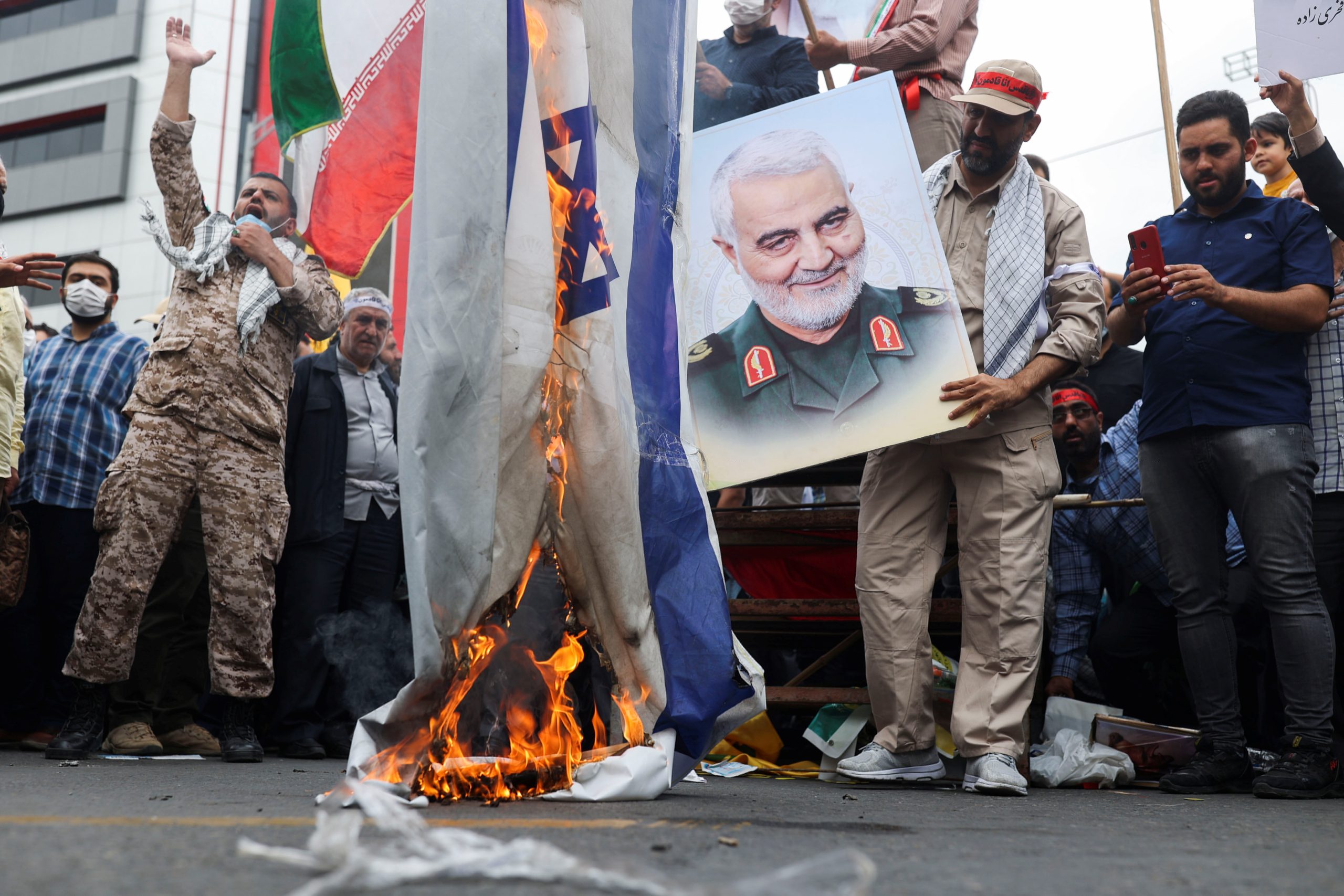Iran: The Imperative to Obstruct Nuclear Progress and Regional Entrenchment
Sima Shine, Raz Zimmt, Ephraim Asculai, Sarah Lerech Zilberberg, and Yuval Rymon
Iran: The Imperative to Obstruct Nuclear Progress and Regional Entrenchment
Sima Shine, Raz Zimmt, Ephraim Asculai, Sarah Lerech Zilberberg, and Yuval Rymon
Summary chart
Current Situation
High-level enrichment · Thousands of advanced centrifuges · Limited inspection · Fissile material for 4 devices within 1 month · Continued regional subversion · Challenges of legitimacy and countermeasures
Current Israeli Strategy
Reject renewed JCPOA · Advocate “longer & stronger” agreement · Create credible military threat · Attack in Syria against regional subversion
Israel’s Strategic Gap
Iran progresses toward short-term breakout capability · No response to Iran’s ongoing progress · Incongruence with the international sense of the threat · Israel alone in the campaign
Strategic Alternatives
- Accept Iran’s being a nuclear threshold state, and perhaps a future nuclear state
- Delay progress with countermeasures at nuclear sites, economic pressure, and diplomatic isolation
- Create independent military option for use in next year or two
Recommended Strategy
Expand cooperation with the US to improve the military option · Build a political framework against the nuclear program, while developing an independent military option · Continue to prevent qualitative capabilities in Syria and Lebanon · Reduce the entrenchment in Syria
Recommended Action
Coordinate with the US on red lines and the response, if crossed · Ensure an independent realm of operation · Receive advanced military capabilities from Washington, to create deterrence and demonstrate US backing · Tighten inspection of sanctions implementation, with an emphasis on oil exports · Increase countermeasures against nuclear sites · Increase inspection and prevention of Iran’s acquisition of machines and materials
Situation Assessment
From Iran’s perspective, the year 2022 was marked by a mix of achievements and challenges. Four years after President Trump withdrew from the nuclear agreement (JCPOA), the Iranian nuclear program has advanced in accelerated fashion and brought Iran to the nuclear threshold. This stage will enable the regime, if it wishes, to complete the construction of an explosive device and conduct a nuclear test, and within a two-year period – a nuclear warhead. The nuclear program now includes the enrichment of uranium at two sites; enrichment to high levels; a large quantity of fissile material at various levels of enrichment, which enable enrichment to a high level within a few weeks for four nuclear explosive devices; the operation of thousands of centrifuges, many of them advanced; and the use of metallic uranium (most of the material at an enrichment level of 60 percent is located at Isfahan, where it can be converted to metal). Furthermore, the program is only subject to limited and partial inspection. At the same time, Iran is in an ongoing conflict with the International Atomic Energy Agency (IAEA) regarding undeclared sites where uranium originating from foreign countries has been found. Regarding this aspect of the program, which is in violation of the Treaty on the Non-Proliferation of Nuclear Weapons (NPT), Tehran has not provided satisfactory explanations.

In the international arena, Iran took a dramatic step in siding clearly with Russia in the war in Ukraine, manifested in the supply of drones and experts, and a commitment for a future factory to produce drones in Russia itself and ballistic missiles. For the first time, NATO sees Iran as part of the problem in the war underway in Europe. In a statement at the end of the NATO summit in October 2022, the member states demanded that Iran refrain from supplying weapons to Russia. Iran’s decision to side with Moscow matches its sharp turn toward the Eastern axis of Russia and China: Tehran publicly announced the turn eastward, and it should be seen as a reflection of the strengthening of the radical conservative camp in Iran, which opposes a return to the nuclear agreement or any rapprochement with the West. Iran for its part views this development as an important contribution to its regional and international standing, and perhaps also as a kind of “insurance” against negative developments. Tehran likewise considers the increasing cooperation with Russia as an opportunity for what it sees as welcome changes in the supply of modern weapon systems and for improvement of its economic situation through trade in local currency and barter.
In the Middle East, Iran plows ahead in its efforts to consolidate its influence in Syria, Iraq, Lebanon, Yemen, the Gaza Strip, and, it hopes, in the West Bank as well. It transfers weapons and advanced technologies to its proxies and allies while adapting the nature of its activity to the changing reality on the ground (e.g., recruiting militias based on Syrian manpower; supplying technologies that enable autonomous production of weapons to Lebanon, Yemen, and the Gaza Strip). Despite difficulties facing its proxies in Iraq and Lebanon, due to internal problems in these countries, the pro-Iranian power centers are dictating the balance of political power, and without them there is no possibility of establishing and managing a governmental system. As such, Tehran ensures its influence in these countries. The establishment of the new government in Iraq headed by Mohammed Shia al-Sudani, who is considered closer to Iran and the pro-Iranian militias than his predecessor, Mustafa al-Kadhimi, could further help Iran advance its objectives in Iraq.

Iran took a dramatic step in siding clearly with Russia in the war in Ukraine, manifested in the supply of drones and experts. Iranian cleric with a locally produced UAV
Photo: Iranian Army/WANA (West Asia News Agency)/Handout via REUTERS
In the internal arena, Iran is grappling with the most significant challenge to the regime’s stability since the Islamic Revolution, due to the severe wave of protests that has continued since September 2022. Unlike previous waves of protest, which focused on a demand for economic improvement, the 2022 protests are of a clear political and anti-establishment character, challenging the very existence of the regime. The regime seems unable to curb the protests, although the demonstrators are unable to undermine the foundations of the regime. However, even if the regime succeeds in suppressing the current wave of protests, continued expressions of civil disobedience are expected, and without practical solutions to the public’s demands and given the ongoing disregard for deep demographic, social, and cultural processes underway in Iran, the protests could intensify to the point of posing a genuine threat to the regime’s survival.
Moreover, Iran is coping with an ongoing economic crisis, despite the continued effort to adapt the country’s economy to the sanctions reality (“resistance economy”). This crisis is expected to worsen given the continuation (and perhaps intensification) of the economic sanctions and popular protests, which have already had significant economic effects due to damage to public property and internet shutdowns by the authorities, which cause serious harm to businesses. 2022 saw a sharp rise in inflation (about 45 percent); in May there were sharp increases in prices, especially of basic goods, following the government decision to cancel the official exchange rate, which is intended for the import of basic food products. Furthermore, Iran faces a severe budget deficit, caused in part by the need to pay monthly allowances to the lower socioeconomic deciles following the exchange rate reform. The budget deficit is worsening despite increased oil revenues, against the backdrop of the increase in oil prices caused by the war in Ukraine and the partial enforcement of sanctions on the export of Iranian oil, in particular to China. The last few months of the year saw a decline in the volume of Iranian exports (apparently to a level of about 850,000 barrels of oil per day), due to the sale of Russian oil to China at discounted prices, as a substitute for Iranian oil.

Iran is grappling with the most significant challenge to the regime’s stability since the Islamic Revolution. Demonstrations in Tehran, September 2022
Photo: WANA (West Asia News Agency) via REUTERS
The budget deficit denotes further damage to the government’s ability to invest in developing national infrastructure, which is essential for economic growth. According to a World Bank forecast, the Iranian economy is expected to grow by a rate of only 2 percent until 2024-2025, a low growth that will likely contribute to a renewed rise in unemployment, which today is estimated at 9.5 percent. Against the backdrop of the economic and political uncertainty, the exchange rate of the Iranian rial continued to decline in the past year, and reached an all-time low of over 360,000 rials to the dollar in the free market. Therefore, it is expected that unemployment, which especially affects the younger generation, the dire economic situation, and the agitation against the repressive and corrupt religious regime, will continue to sustain severe civil protests.
The Conflict with Israel
Israel is seen as the main threat to Iran’s national security, particularly as only Israel is willing to take action that challenges its regional presence, with an emphasis on Syria, as well as action (according to foreign sources) on Iranian soil itself. So far Iran has not found an effective response to the principal clash in Syria. Attacks on ships, cyberattacks, and even encouragement to militias in Syria to harm the US presence at al-Tanf have so far not created the deterrence it desires. In Iraq, Iran has tried to exact a toll through attacks in the Kurdish region, where it claims there is cooperation with Israel, but its achievements there are also limited. Furthermore, Iran’s activity in this region is circumscribed by the desire to maintain the fragile Iraqi government. The tension between Iran and Azerbaijan, which share a border, has intensified against the backdrop of the relations between Israel and Azerbaijan. As Israel’s relations with Baku have grown stronger, Tehran has become increasingly concerned at the intelligence and operational possibilities that Israel could attain from its presence in Azerbaijan. However, a series of public Iranian threats toward Baku, as well as military exercises on their shared border, have not deterred Azerbaijan, and in November 2022 it even announced the opening of an embassy in Israel. In Iran’s eyes, this development echoes the Abraham Accords, which it also failed in preventing, and strengthens its sense that Israel is trying to encircle it, a response of sorts to the ring that Tehran itself created on Israel’s borders through its presence and that of its proxies.
The Challenges for Israel
The principal challenge regarding the nuclear issue is the lack of a response in the immediate term to the major progress of the nuclear program. This absence is strengthened by the little attention to the issue in the United States and Europe due to other major global issues, led by China and the war in Ukraine
In the regional arena, the campaign between wars in Syria has succeeded in blocking only some of the weapons transfers; in Lebanon, Hezbollah insists on maintaining a balance of deterrence against Israel; in Iraq a government controlled by the pro-Iranian current has been established, and pro-Iranian militias there constitute part of Iran’s security concept; and the effort to generate agitation in the West Bank continues via Islamic Jihad.

Israel is seen as the main threat to Iran’s national security. Burning an Israeli flag at a demonstration by supporters of the regime in Tehran, April 2022
Photo: Majid Asgaripour/WANA (West Asia News Agency) via REUTERS
The Israeli Strategy and the Gap vis-à-vis the Reality
Israel opposes a return to the nuclear agreement, and has demanded the formulation of a new “longer and stronger” agreement, an idea that Iran rejects. Along with the development of an independent military option, Israel aims to convince the United States to strengthen its deterrence against Iran, which has been undermined, and to present a credible military threat. The main gap in this policy is that Israel does not wield influence on whether the agreement with Iran is revived, it is unable to bring about a longer and stronger agreement, and there is little chance that the US administration, which assesses longer timetables until a potential Iranian breakout than those in Israel’s assessment, will bolster a credible military option. In these circumstances, Israel does not have a response to Iran’s continued nuclear achievements. Iran continues to progress toward an ability to decide, if it so chooses, on a short-term nuclear breakout.
Israel’s Strategic Alternatives
In the nuclear sphere, Israel has few – and no favorable – options:
- Come to terms with Iran becoming a nuclear threshold state, and its potential choice if/when to progress to a nuclear breakout.
- Continue intensively with countermeasures against nuclear sites, in the hope of delaying Iran.
- Prepare a military option and be ready to use it independently in the next year or two.
In our assessment, no option ensures that Iran will not have military nuclear capability.
Recommended Strategy
In the nuclear realm:
- Encourage an announcement by the United States and European countries on the “death” of the JCPOA and a return to the Security Council to reach a new decision on sanctions on Iran – the “snapback” procedure – according to the nuclear agreement.
- Formulate a roadmap agreed upon with the United States, and preferably also with European countries (the E3 – Germany, the UK, and France), regarding responses to escalatory steps in the nuclear program and agreement on (covert) red lines.
- Continue countermeasures to delay progress on the nuclear program, with an emphasis on high-quality targets that cause prolonged delays.
- Advance an independent military option.
- Advocate stricter US enforcement of the sanctions imposed on Iran, with an emphasis on oil exports; expand the circle of sanctions beyond economic sanctions to political isolation (suspend Iran from political activity such as UN committees and participation in sports events, prevent visits abroad and study abroad).
- Take action to increase inspection and prevention of Iranian procurement of dual-use materials and machines.
In the regional arena:
- Continue the Israeli strikes in Syria (the campaign between wars) and the covert activity on targets in Iranian territory in order to damage relevant deployments (the Revolutionary Guards, the missile and drone systems), that serve Iran’s regional entrenchment efforts and the supply of weapons from Iran to its proxies.
- Advance bilateral and multilateral cooperation in intelligence and operations with the Gulf states, to improve their ability to cope with the threat of Iranian drones and missiles. This should be done in cooperation with the United States and managed while considering respective sensitivities, given the Iranian threats.
- Maximize the improvement of relations with Turkey to examine cooperation vis-à-vis Iranian activity in Syria (and perhaps also in Iraq).
- Use the Iranian military aid to Russia to increase pressure on the West to act (including through increased economic pressure) against the Revolutionary Guards and Iran’s missile and drone systems.
- Coordinate with the United States and the Gulf states in the framework of CENTCOM’s Combined Task Force 153, in order to block Iranian attempts to transfer weapons by sea.


